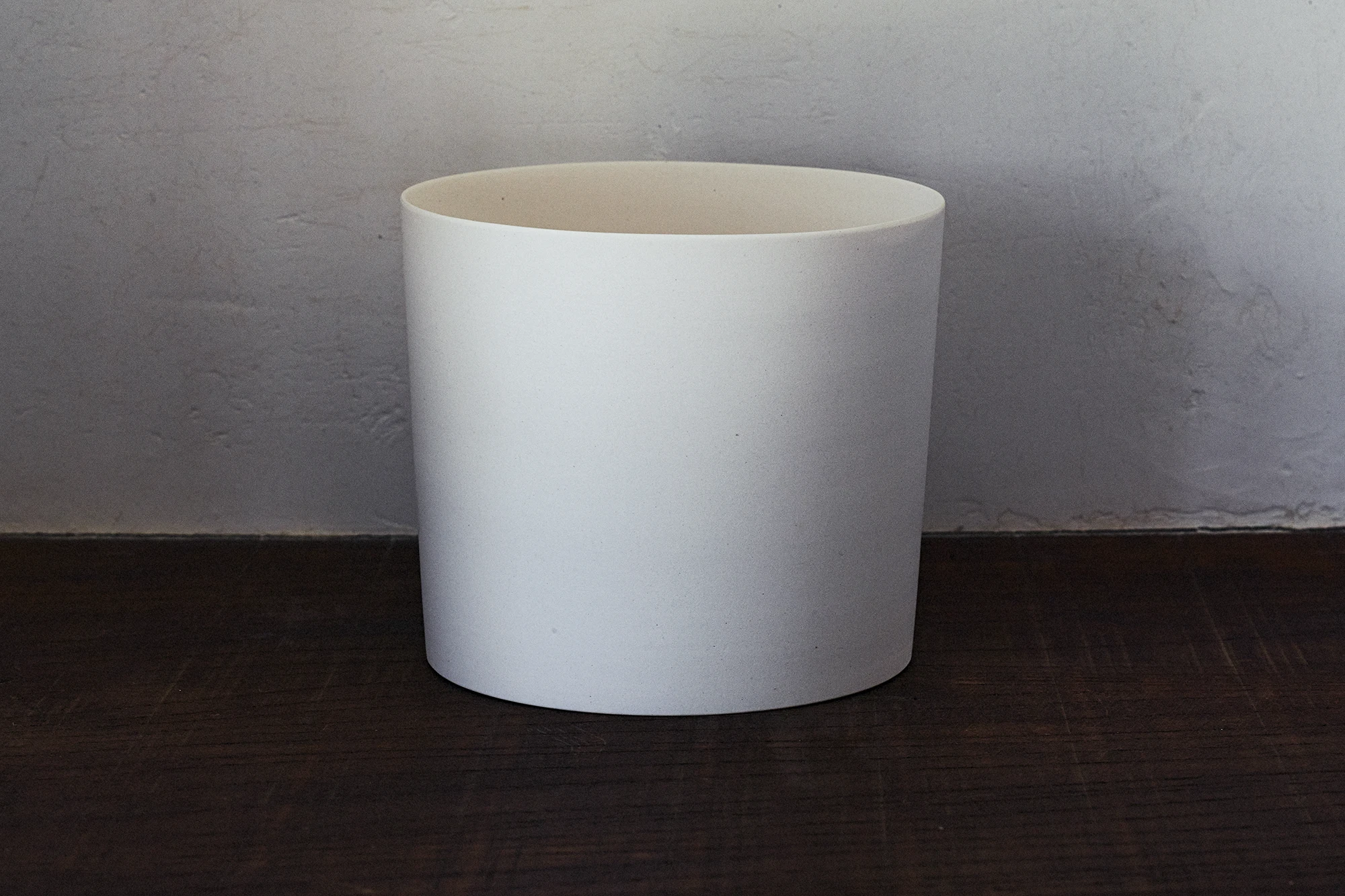
I have traveled the world and have continued to study and do research in my own way by creating different types of ceramics with the clay found locally. There is something I realized in the process. In Japan, how beauty is perceived in ceramics is entirely different from other countries.
China and Korea, the two countries that could be regarded as mentors for ceramic works in Japan, have long sided with the aesthetics of political background or governments of the times, therefore the ceramics produced by the governmental porcelain furnace was redeemed as higher in value. They were primarily symmetrical and executed with higher precision. The way they were glazed brought an evenness to the color, and the ceramic paintings technique was the highest level used.
When ceramics were introduced from China and Korea 400 years ago, the Japanese discovered beauty was not from the government porcelain furnace but the miscellaneous vessels made in private kilns that produced these tools for the common people. The perfect example is the “Oh-ido tea bowl – entitled Kizaemon” of the Ly Dynasty in Korea, a designated National Treasure of Japan.

In the Momoyama era (16th Century), the Japanese would embark on their attempt to make their own ceramics, inspired by what they saw in that bowl – the beauty that lied within. These ceramics were not meant for showing off their technique but were ceramics with a beauty that played with the impression of chance that could have only been executed by craftspeople with highly technical command and strong sensibilities.
For example, most of the tea bowls would have softly undulating rims and, for the most part, are not shaped to form a perfect roundness. The color with which they are glazed is uneven, and the painting decorations are as abstract as a work of contemporary art. The “Shino chawan (tea bowl) – entitled Unohanagaki” from the Momoyama era is one of the two bowls designated as National Treasures of Japan and made in Japan. You can clearly see the sense of Japanese beauty with this bowl. With this kind of creativity, the Japanese reflected a snowy landscape or light filtering through tree leaves on the vessels.

At the same time, a similar aesthetic had been nurtured on the user’s side. Being different from China and Korea, the Japanese would hold the vessels with food in their hands when they eat every day, and if it were in the form of soup, they would sip with their mouth against the bowl. If it is too heavy, it will become too much of a hassle, and if did not feel right to the lips, you may never want to use it again. The culture of chanoyu (tea ceremony) also has a significant meaning. Each utensil is taken by hand, observed, and handled with special care in the tea ceremony room. In other words, the Japanese spend a lot more time with their vessels than others.
With an understanding of Japanese aesthetics as a user, Handeishi Kawakita had created masterpieces as a maker. One of his representative works is the “Kohiki chawan (tea bowl) – entitled Dawn of snow” possessed by the Sekisui Museum. By not pushing too much of his intent into the work, one could sense his extraordinary talent by his knowing “when to stop.”

Other artists who have succeeded the Japanese aesthetic to the contemporary times are Ryoji Koie and Taizo Kuroda. The critics consider Ryoji avant-garde, but he is technically so well-versed with the pottery wheel that even the simplest bowl or pot has taste. Although Taizo’s work appears very meticulous by impression, I think they really represent a Japanese uniqueness. For example, his most recognized work, called “Ento (Cylinder),” appears simplest in its form, but the edges faintly fluctuate and have a fullness and complexity to them. And what supports it is his technique at the highest level.
Because this unique aesthetic has been shared between the maker and the user, a unique ceramic culture had been nurtured in Japan that cannot be seen in the rest of the world. Basically, this sensation has not changed for over 400 years. The vessels that many people believe they “like” have survived the times for a reason.

Born in Aichi, 1969. Graduated from Aichi Prefectural Seto Pottery Senior High School with a major in Ceramics. After working in a ceramic factory for mass production, he traveled abroad. Visiting ceramic studios the world over, he made ceramics from local clay. In 1992, he opened his own studio in Yokkaichi City. He opened his private museum, “BANKO archive design museum,” in 2015 to introduce Banko-ware. With a wide range of creative styles and secure techniques, he is known for his strong interest in the old and is highly respected in and out of Japan. He is one of the highest-profiled artists in contemporary Japan. He is also known as a collector.
Original Japanese text=Akiko Inamo photography (portrait)=Kensaku Kakimoto

